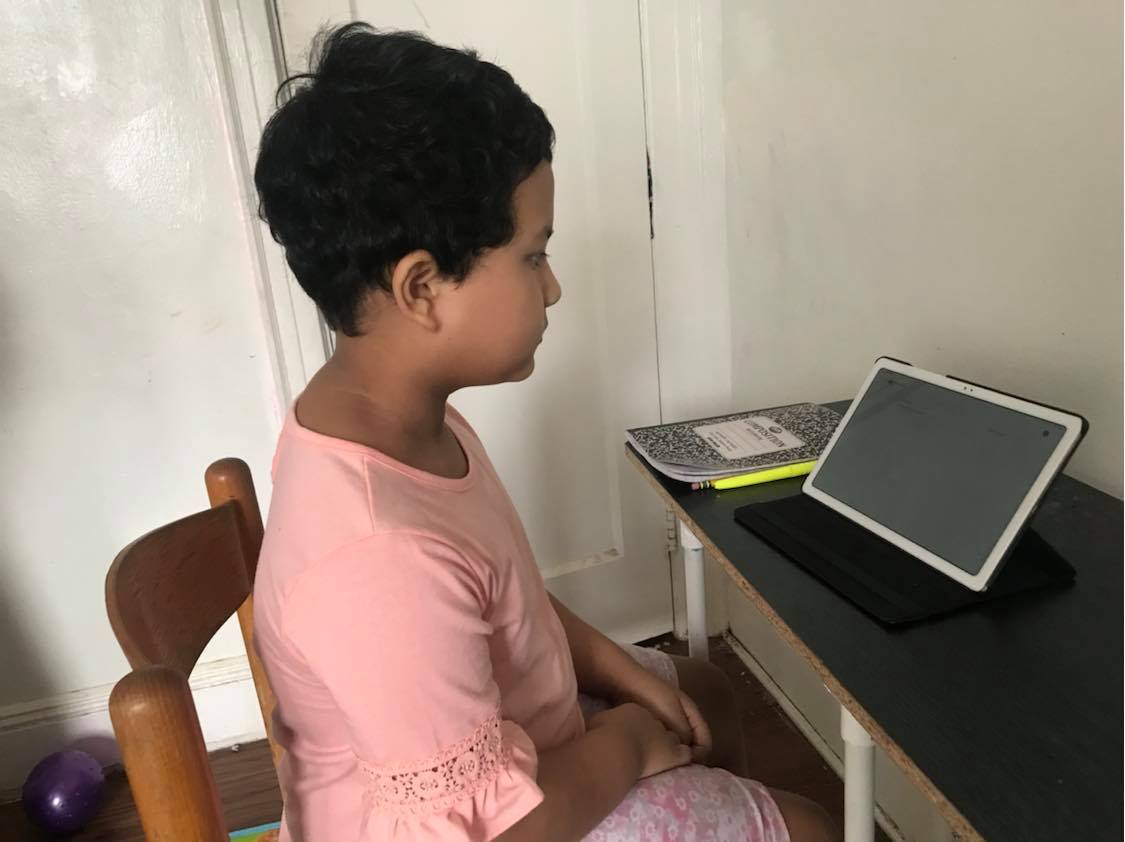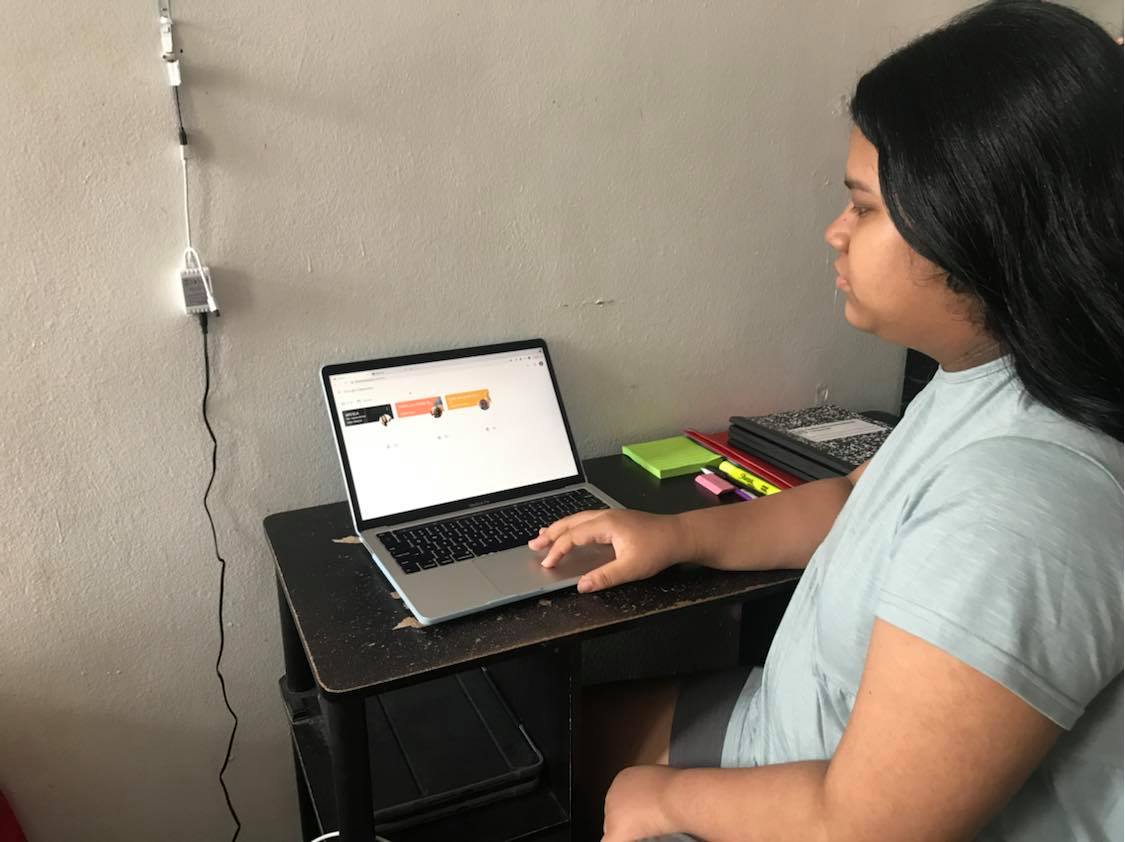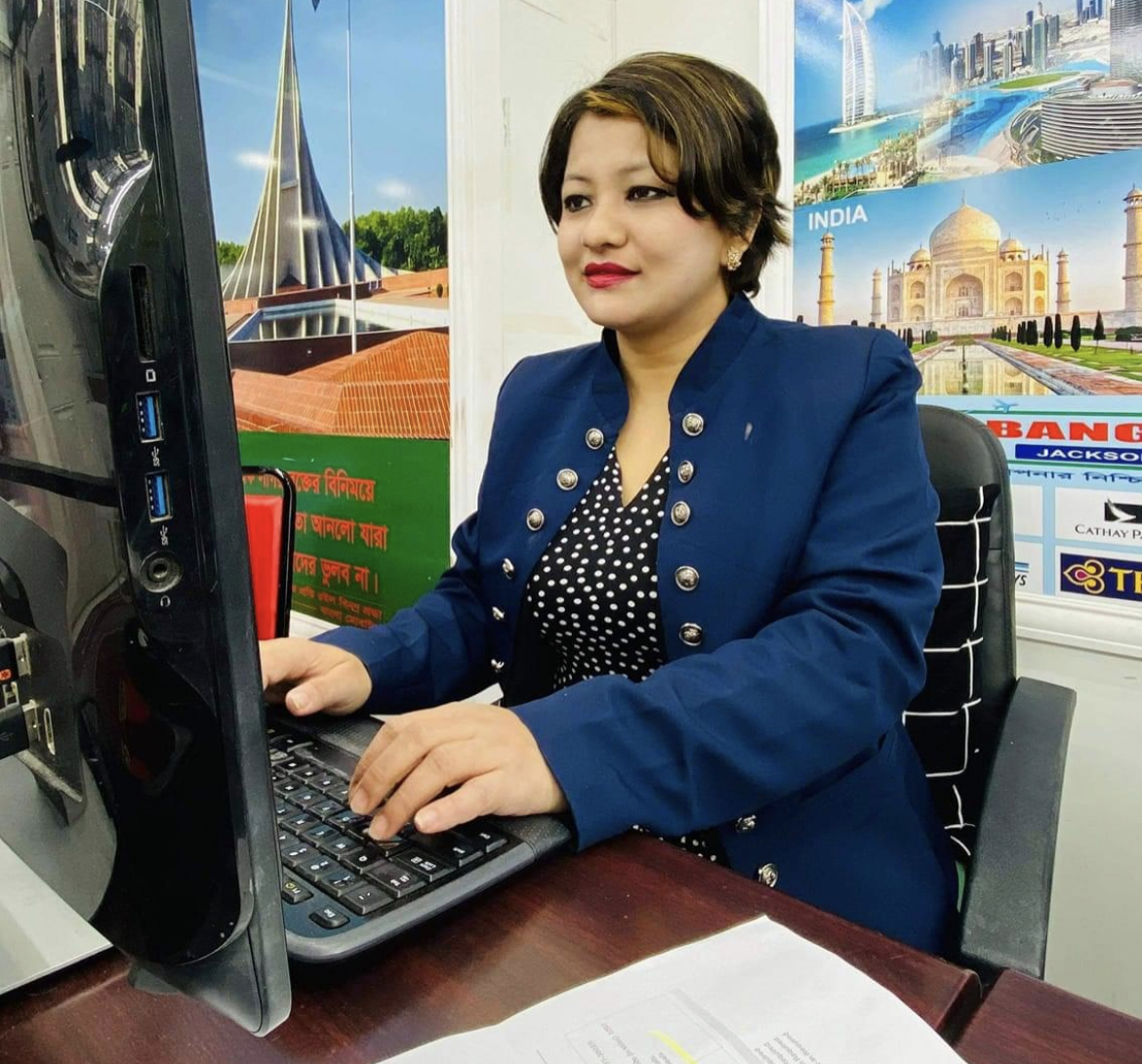“I have no clue what my daughters were taught and what they learned during their online classes throughout the pandemic,” says Kanchan Basnet, 34, a mother of two daughters residing in Queens, New York.
In 2016, Kanchan arrived in New York as an immigrant with her elder daughter Diksha KC, who is now 12 years old. When they arrived, Diksha had already completed her Grade 1 studies in Nepal. In New York, she was enrolled directly in Grade 2. At the beginning of her schooling in New York, she struggled with the culture of her new school and mostly with the language of instruction in her classroom. But in no time, she overcame the difficulties and had a firm grip on the English language. She adjusted to the new school setting quite smoothly. Currently, she is a 7th grader at I.S. 230 in Queens, NYC.

In contrast, for Kanchan’s younger daughter, Divyani KC, who is 8 years old now, the journey was not that smooth. Divyani arrived in New York to join her mother and sister in 2018 when she was just four years old. A year flew by, and in the year 2019, she was admitted to the school in New York. While she was struggling with English, a new educational system, and a new culture, the pandemic knocked on the world’s door, and schools shifted teaching and learning to online classrooms. Currently enrolled in Grade 3 at Woodside’s PS 157, she still struggles with reading.
The Covid-19 pandemic has disrupted the education of an entire generation of children. More than 55 million school children from kindergarten through 12th grade were sent home to learn when the pandemic hit the United States, according to a Save the Children report. Being cut off from school, teachers and friends, children faced significant learning loss due to COVID-19. Students from lower-income families and communities of color in particular suffered the most, and Kanchan’s family is one of them.

The pandemic compelled schools all around the world to adopt and adapt an online model to continue the teaching and learning activity. All schools were forced to find online alternatives to carry forward academic activities, and in most places, schools shifted to online classrooms with mediocre preparation. For 8-year-old Divyani, online classes sadly were not effective. Kanchan reported that, from 2020 after the start of online classes, both her daughters, Diksha and Divyani, experienced significant learning loss. “Before the pandemic, during the regular in-person classes Diksha used to score 99%,” said Kanchan, “but now her grades have slipped below 90%. And Divyani, who used to score 70% before the online classes, now scores below 43%.”
The English language barrier has also been a big obstacle for this immigrant family. Kanchan herself only has basic knowledge of the English language, and her younger child is struggling the most with it. Kanchan said that her younger child, having recently left Nepal, is having a tough time understanding what is being taught online.
Kanchan said: “If the kids were in school, they could have easily asked their teachers [to explain] the topic they were confused with and it would have been easier for them to understand, but the online classes lack that intimacy, ease, and flexibility. I feel my kid interprets “an ant” when the teacher says, “an elephant.” My younger daughter keeps getting confused with the topics and has skipped many of her assignments. Out of 40 questions, she did not even attempt 20 questions as she had trouble understanding what was being asked.”

Kanchan’s elder daughter Dikshya said, “I would rather go to school than study online because I have been living inside of my home for a long time. I’m bored. I used to have fun with my friends at school. That’s why I’m eager to go to school in September.”
Kanchan is the breadwinner of her family, and even though she tried, she was not able to help her daughters with their schoolwork. Kanchan, who resides at 72nd street, Northern Boulevard, Queens, does not have any other family member to help her. Even during the Covid-19 pandemic, she had to regularly go to her work. She was working at a travel agency in Jackson Heights, Queens. Hundreds of flights were affected due to pandemic, and she had to work for customers affected by the pandemic. For Kanchan, her main priority was to bring food on the table and keep a roof over her family’s head.
Kanchan says, “I cannot leave my work, as we do not have any other source of income, and because of my work I was not able to help my daughters in their schoolwork.”
At the beginning of the pandemic, her daughters did not even have an iPad or a laptop for their online classes. When the family contacted the school, and made them aware about their issues, the school provided them with two iPads on the condition that they must return them to school, once the regular in-person classes start. Yet, as they were not well versed with technology, they struggled initially with the setup of online classes. They were assisted by school over phone calls on how to log in and attend the online classes.
Kanchan remembered: “Kids’ classes started at 7 am, but since I work till late at night, it was difficult for me to guide them in the morning as I was not able to wake up early in the mornings. By the time I woke up and prepared meals for everyone, it was time for me to go back to work. I was not able to supervise or guide them during their online classes as their classes were at the same time I had to be at work.”
“When they were in school, under the supervision of teachers they focused more on their studies, however, during online classes, kids would turn on their devices and play around and teachers did not even care much. Teachers would not say anything, even if the kids switched off their cameras. At times kids would just sign out and play. The whole thing about online classes felt like it was just done for the sake of doing. Learning was not at all effective for the kids and children faced significant learning loss.”
Save the Children reported that early in the pandemic, only 60% of low-income students were regularly logging on to remote learning and around 40% of low-income students skipped or signed out of their classes in the middle of their session. Unfortunately, there is a lack of data and even no study has been carried out in the context of minority groups such as Nepali.
Kanchan adds that kids did not understand assignments and hence did not turn them in or missed the deadlines. At times her kids left the online class in the middle of their session, but the teachers did not try from their end to ask them to rejoin the classes. Further, she adds that her kids did not answer most questions in the assignments as they did not understand the questions, yet the teachers did not try to explain them in a better way.
Kanchan pours out her discontent about the ineffectiveness of the ClassDojo, a digital classroom management tool designed to help teachers improve student behavior and communicate more effectively with parents, provided by the school administration. Kanchan shares those complaints on the ClassDojo other than those about extra classes for the kids to compensate for the missed lessons were addressed by the school administration.
The whole family tested positive for Covid last year in May., and the sisters were even hospitalized. All of them were under medication and were quarantined. For more than two weeks the kids could not even attend their online classes. As they tested positive, the school administration also advised them to take complete rest not to add any mental stress to kids. But, the school did not provide any extra classes for the kids to catch up on their missed sessions.
Kanchan says, “For the classes which my kids missed, their school did not even try to reach out to our home or provide any personal assistance.”
“Parent’s group could not even provide any assistance because of the pandemic,” says Kanchan. Kanchan says that the school did offer a hybrid model of either online or in-person class modality, however, the schedule clashed with her job timings, which made the choice difficult. While quite a few Nepali organizations are working for the benefit of the Nepali community in New York, yet none focused their energy on the learning struggles of students, especially children of immigrants, during the pandemic.
Urgen Sherpa, then president of United Sherpa Association (USA), said they could not give high priority to children’s education because it was important to save lives during the pandemic.
“We shared information on how to teach children at home. We also gave tips to raise awareness about the children’s mental health. But there was no separate program for teaching children who faced learning loss,” he said.
United Sherpa Association had distributed medicines, health items and food to the Nepali community affected by the pandemic. The organization also played a significant role in providing necessary assistance for the treatment of the sick and in the cremation of the deceased. Financial and food assistance was also provided to the college students.
The Support Team for Covid-19, which includes about 3 dozen organizations from the Nepali community in New York, aided the affected community members in the epidemic. The situation became tense in New York in the third week of March 2020, when Nepalis began to die from corona infections and many Nepalis went on ventilators. In the early days, pharmacies also lacked sanitizers, masks, gloves, Tylenol, and thermometers. In this case, the Support Team for Covid-19 had started to collect the health materials and make them available to the needy Nepalis in New York.
“Our focus has been on saving lives. There was no planning for the children’s education,” Team coordinator Ananda Bist said.
Kanchan shares, “I searched for programs to help students who are struggling but failed to find any. I even looked in tuition classes for course make-up, but the pandemic and covid crisis even made that difficult, as I was not able to hire a home tutor or send my kids to get tutored.”
Kanchan stresses that for students whose studies have suffered there needs to be the provision of extra classes so they can recover their learning. She suggests, “Students who faced learning loss need special courses and extra classes. As kids are behind, and they have not been able to understand most of the content being delivered in the online classes.”
She fears her children will fall further behind. She says, “My younger daughter struggles even to read the words. She will struggle more in her Grade 3. I feel if there was some after-school class for my younger daughter and tuition/coaching for my elder, their courses could be recovered, if not I feel it will be really difficult for my kids to catch up.”
Kanchan feels that after regular classes end, teachers should help students for an extra one or two hours and assist them with their homework. She says, “Even the parents’ group can unite and try to help the students. I have heard the Government has provided funds for students; I feel those funds must be utilized well.”
(This story was reported with support from the William and Flora Hewlett Foundation.)








